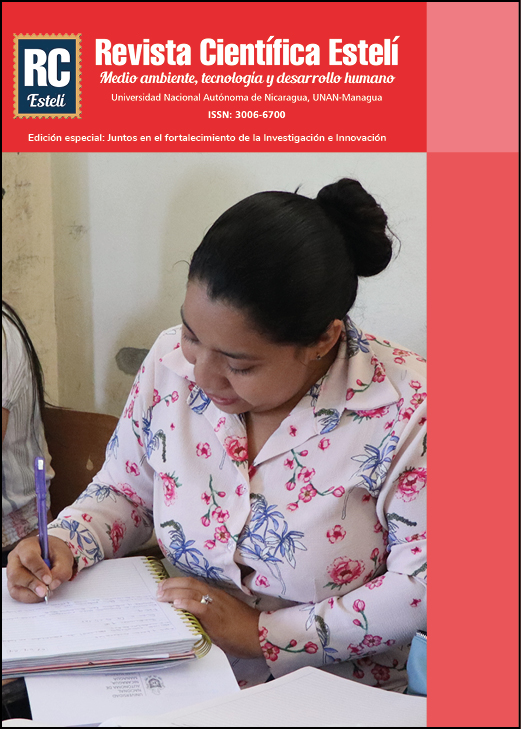Riqueza, abundancia y diversidad de aves en ecosistemas antropizados y no antropizados del corredor seco nicaragüense
DOI:
https://doi.org/10.5377/esteli.v13i2.19819Palabras clave:
Agroforestal, escorrentía, manantial, sistema, silvopastoralismoResumen
Los bosques son importantes para el mantenimiento de la diversidad de especies y la regulación del clima global. El bosque seco tropical es uno de los ecosistemas boscosos más diversos y más amenazados, especialmente por expansión de agricultura. Se compararon la riqueza, abundancia y diversidad de las comunidades de aves en hábitats antropizados y no antropizados del corredor seco nicaragüense: tres agro-ecosistemas con cultivos con cosecha de agua, bosque seco con predominio de Quercus segoviensis Liebm y bosque ripario. Se observaron 2,155 individuos distribuidos en 106 taxones y 34 familias. La familia Tyrannidae fue la más representada con 207 individuos y 16 taxones. El gremio alimenticio de mayor abundancia en los tres agro-ecosistemas fue insectívoro, y también, en el bosque de roble, mientras en el bosque ripario, fue frugívoro. Los tres agro-ecosistemas tuvieron composición de taxones de aves más parecidas y también composición de gremios alimenticios de aves, que los dos sistemas menos antropizados. Se documentaron tres especies de alta prioridad de conservación. El amplio mosaico de sistemas antropizados tiene un efecto aditivo en la comunidad de aves en el corredor seco nicaragüense.
Descargas
219
HTML 32
Publicado
Cómo citar
Número
Sección
Licencia
Derechos de autor 2024 Revista Científica Estelí

Esta obra está bajo una licencia internacional Creative Commons Atribución-NoComercial-CompartirIgual 4.0.
© Revista Científica de FAREM-Estelí

